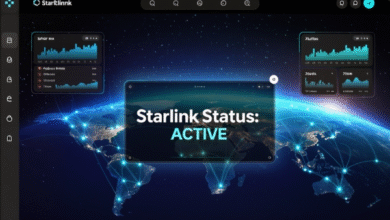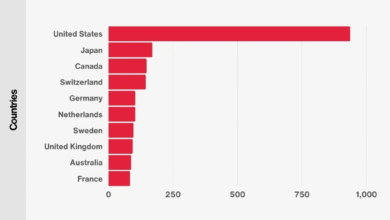Trump Administration Intel Stake: What It Means for Investors

Recent reports indicate that the Trump administration is contemplating a significant move into the semiconductor landscape by acquiring a 10% stake in Intel, a strategy aimed at bolstering the U.S. government’s involvement in the semiconductor industry. This potential investment could position the administration as the largest shareholder of Intel, an influential chip manufacturer that has faced challenges in maintaining its market position. With the backdrop of the 2022 CHIPS Act, which allocated billions to invigorate U.S. semiconductor production, this proposed equity stake may also include converting prior grants into shares of the company. As Intel received around $10.9 billion in funding from the CHIPS Act, the implications of such a shift could redefine the dynamics of government investment in the tech sector. Investors initially reacted positively to this development, underscoring the importance of Intel investment news in the current economic landscape.
The ongoing discussions about the Trump administration’s possible equity acquisition in Intel reflect a broader trend of governmental engagement in the tech sector to enhance national security and economic competitiveness. By considering a stake in Intel, the administration seeks to play a pivotal role in shaping the future of semiconductor production in the United States. This possible maneuver aligns with the objectives outlined in the 2022 CHIPS and Science Act, which aims to restore American leadership in the semiconductor market. As various stakeholders analyze the potential ramifications of such a policy shift, the implications for Intel’s performance and the overall health of the semiconductor industry remain topics of considerable interest. Indeed, the interaction of government policy with private enterprise could fundamentally alter the landscape for chip manufacturers, highlighting the strategic significance of U.S. government equity involvement.
Trump Administration’s Potential Intel Stake: A Game-Changer for the Semiconductor Industry
The Trump administration’s contemplation of acquiring a 10% stake in Intel represents a significant shift in U.S. government involvement in the semiconductor industry. If realized, this equity stake may position the U.S. government as the largest shareholder of Intel, highlighting the administration’s strategy to bolster national interests in technology and manufacturing. The plan stems from a broader context of reinforced American manufacturing capabilities as outlined in the 2022 CHIPS Act, which seeks to reempower U.S. leadership in the global semiconductor landscape.
This potential equity deal could dramatically impact Intel’s market position, especially amid ongoing competition with key players like TSMC and Samsung. By converting a portion of Intel’s grants from the CHIPS Act into an equity stake, the administration aims not only to boost Intel financially but also to ensure that the U.S. retains a competitive edge in semiconductor production. The implications of such an investment would extend beyond company shares, potentially influencing the entire semiconductor ecosystem, which is crucial for technological advancement and national security.
Understanding the 2022 CHIPS Act and Its Impact on Intel
The 2022 CHIPS Act plays a pivotal role in shaping the future of America’s semiconductor landscape, providing $39 billion in grants aimed at rejuvenating domestic chip production. Intel, as the largest beneficiary of this act, has received nearly $10.9 billion, including significant allocations for both commercial manufacturing and national security projects. The funding not only supports Intel’s operational capabilities but aims to ensure that the company remains at the forefront of technological innovation in the United States. This legislative initiative reflects a bipartisan recognition of the need to secure U.S. interests in the semiconductor industry.
Intel’s prospects under the CHIPS Act are intertwined with broader economic and security concerns. The act was introduced to combat the increasing dominance of foreign chipmakers and to secure the supply chain for critical technologies. Thus, a potential conversion of some grants into an equity stake could serve dual purposes: providing Intel with much-needed financial support while also allowing the government to exert oversight on its operations. This scenario embodies a strategic approach to ensuring that the United States not only invests in but actively participates in shaping the future of semiconductor manufacturing.
Market Reactions: How Trump’s Intel Proposal Affects Investors
Investors have reacted variably to the Trump administration’s prospective investment in Intel. Following the announcement of the possible government stake, Intel’s shares spiked by nearly 9%, showcasing initial optimism among stakeholders regarding the government’s commitment to supporting the U.S. semiconductor sector. This surge indicates a growing belief that collaboration between the government and key industry players, like Intel, could ultimately lead to a revitalization of American technological leadership.
However, the market’s reaction isn’t solely positive. Concerns linger about the overall viability of the government’s plan, given the uncertainty regarding comprehensive support within the administration and potential challenges in navigating the competitive semiconductor environment. Memoirs of skepticism emerged as shares dipped by over 3% as investors weighed the implications of a government-backed stake. This duality reinforces the importance of maintaining investor confidence while embarking on such significant interventions in the market.
Assessing the Broader Implications of Government Investment in Intel
The potential government investment in Intel carries profound ramifications not only for the corporation but also for the semiconductor industry as a whole. Should the Trump administration decide to proceed with acquiring a stake, it may set a precedent for increased government involvement in critical sectors deemed vital to national interests. Such moves could lead to the establishment of government-backed national champions, prompting other industries to seek similar support as they navigate the evolving economic landscape.
Furthermore, this investment aligns with a growing sentiment about the need for government engagement in technology sectors that underpin national security. By reinforcing Intel’s market position, the U.S. also seeks to bolster its strategic independence in semiconductor production, challenging foreign dominance and enhancing domestic capabilities. Analysts suggest that while financial infusions are critical, addressing the operational challenges within Intel is crucial to ensure the company’s sustainable growth and resilience in the competitive market.
Intel’s Struggles Amid AI Boom: Can Government Help?
Despite substantial investments and favorable legislative support, Intel has faced significant challenges in boosting its market position within the booming AI sector. Current market dynamics have posed obstacles for Intel, which has not yet secured a strong foothold among major customers for its AI-related products. Observers of the tech landscape suggest that without government intervention, such as a potential stake or financial backing, Intel’s ability to innovate and compete could be further compromised amidst fierce competition from AI-champions globally.
Some analysts advocate that active government support is essential for revitalizing companies like Intel, primarily to uphold U.S. national security interests. As advanced silicon becomes increasingly critical for national defense capabilities, there is mounting pressure on the U.S. government to take decisive actions before the competitive disadvantages overwhelm domestic industry strengths. The question remains whether government backing, such as the proposed stake, would effectively translate into the operational efficiencies that Intel desperately needs to regain its industry dominance.
The Role of Major Investors: SoftBank’s Bet on Intel
SoftBank’s recent decision to invest $2 billion in Intel, making them the fifth-largest shareholder, signals strategic confidence in the chipmaker’s future. This investment complements the potential government stake, reflecting a trend where key investors are looking to capitalize on Intel’s recovery efforts. Masayoshi Son, SoftBank’s CEO, emphasized the belief that advanced semiconductor manufacturing is integral to the U.S. economy, underscoring the critical role that Intel plays within this infrastructure.
The implications of SoftBank’s investment are significant, as it not only demonstrates private-sector interest in Intel’s revival but may also encourage other investors to follow suit in backing the company. This convergence of government interest and major private investments could create a robust support network to facilitate Intel’s return to competitiveness in a challenging environment dominated by technologically advanced rivals. The challenge for Intel will be to harness this backing effectively to generate tangible improvements in operational viability and market share.
Speculation on Strategic Meetings: Trump and Intel Leadership
Recent discussions between President Trump and Intel’s CEO Lip-Bu Tan raise speculation about the strategic direction of the company amid potential government involvement. While the specifics of their conversation remain undisclosed, the meeting signals an openness from the administration to engage directly with key industry leaders. This approach could shape future policies and investment strategies as they relate to maintaining a competitive edge in semiconductor manufacturing.
As both parties navigate the complexities of governmental support and technological advancements, the focus remains on ensuring that Intel not only rebounds but also thrives in a challenging global market. The engagement of high-level discussions between government officials and corporate leaders indicates a concerted effort to address the unique challenges facing Intel while potentially pursuing partnerships that could lead to innovation and industry leadership.
Navigating Challenges Ahead: Intel’s Future and the Government’s Role
While the prospect of government involvement presents opportunities, it also comes with inherent challenges for Intel as it seeks to reestablish itself as a leader in the semiconductor industry. The road ahead requires careful navigation of the strategic alliances and operational reforms needed to overcome long-standing hurdles. Analysts suggest that the government’s role must extend beyond mere financial support to include guidance on technological advancements and competitive strategies that facilitate industry growth.
Moreover, the success of any potential government stake in Intel hinges on a collaborative approach between public and private sectors. By fostering partnerships that prioritize innovation and competitiveness, Intel can leverage the backing of both government and major investors to address its challenges effectively. Only through a combined effort can the industry adapt to shifting market demands and secure a leading position in the advancing semiconductor landscape.
The Future of U.S. Semiconductor Manufacturing: Intel’s Key Position
In contemplating the future of U.S. semiconductor manufacturing, Intel occupies a critical role in the larger narrative of technological competitiveness. As efforts persist to retain and enhance domestic manufacturing capabilities, Intel’s ability to leverage potential government investment could serve as a catalyst for revitalization. The chipmaker’s path forward must align with national goals outlined in legislative frameworks like the CHIPS Act, ensuring that investments yield positive outcomes not only for Intel but for the broader economy.
Furthermore, fostering a resilient semiconductor industry relies on leveraging all available resources, including strategic government investments. The collaboration between the Trump administration and Intel will play a pivotal role in shaping the industry’s direction, affirming the United States’ commitment to maintaining leadership in semiconductor design and production. As these developments unfold, the intertwined fates of Intel and the U.S. government will highlight the importance of adaptive strategies in addressing emerging technological challenges.
Frequently Asked Questions
What are the implications of the Trump administration’s potential Intel investment news?
The Trump administration’s consideration of acquiring a 10% stake in Intel may have significant implications for both the company and the semiconductor industry at large. This U.S. government equity stake could position the government as Intel’s largest shareholder, potentially providing support to revitalize Intel’s market position amid growing competition globally. Furthermore, converting grants from the 2022 CHIPS Act into equity could shift the financial dynamics of federal funding in the tech sector.
How does the 2022 CHIPS Act affect Intel’s market position?
The 2022 CHIPS Act has greatly influenced Intel’s market position by designating substantial funding aimed at bolstering semiconductor manufacturing in the U.S. As the largest beneficiary of this act, Intel received about $10.9 billion in grants, vital for boosting its manufacturing capabilities and competitiveness in the semiconductor industry. This government intervention reflects a strategic move to ensure Intel remains a key player amid increasing global competition.
What are the concerns surrounding the U.S. government equity stake in Intel?
Concerns surrounding the proposed U.S. government equity stake in Intel include uncertainty about the proposal’s support within the Trump administration and whether discussions have been held with relevant companies. Analysts express doubts about how effective government intervention will be, as some believe Intel’s challenges are more complex than mere funding issues. Additionally, there are worries about governance and operational implications if the government becomes a significant shareholder.
How could a government equity stake impact Intel’s future in the semiconductor industry?
If the Trump administration were to convert its grants from the 2022 CHIPS Act into an equity stake in Intel, this could potentially enhance the company’s financial stability and operational decisions. However, such a move would also mean government oversight and possibly influence on Intel’s strategic direction. The government’s backing may provide a competitive edge in the semiconductor industry, especially in fostering innovation needed to adapt to booming sectors like AI.
What role does the Trump administration play in shaping Intel’s strategy?
The Trump administration’s involvement in Intel’s strategy could manifest through potential significant government investments and regulatory frameworks influencing the semiconductor market. By acquiring a stake in the company, the administration could steer Intel’s initiatives, particularly in advancing technology development and securing national interests in semiconductor manufacturing, positioning the U.S. to regain leadership in the industry against global competitors.
| Key Point | Details |
|---|---|
| Potential Stake Acquisition | The Trump administration is considering acquiring a 10% stake in Intel, which could make the U.S. government the largest shareholder. |
| Market Impact | A 10% stake at Intel’s current capitalization could be worth approximately $10.4 billion. |
| Intel’s Grants | Intel has received about $10.9 billion in Chips Act grants, including $7.9 billion for manufacturing and $3 billion for national security. |
| Investor Reaction | After news broke, Intel’s shares spiked nearly 9% on August 14, though they later dipped 3% before rebounding. |
| Administration Support | It’s unclear if the proposal has broad support within the administration or if discussions with companies have occurred. |
| SoftBank Investment | SoftBank is investing $2 billion in Intel, making them the fifth-largest shareholder, further adding to the interest in Intel. |
| Challenges Facing Intel | Intel struggles with advanced chip production and has yet to secure major customers for its AI manufacturing segment. |
| Future Outlook | There is speculation about whether government intervention can address Intel’s deeper challenges beyond just funding. |
Summary
The Trump administration Intel stake may signify a pivotal shift in U.S. involvement in the semiconductor sector. As the government considers acquiring a 10% stake in Intel, it reflects a larger strategy to secure U.S. leadership in chip manufacturing amid growing competition. This potential investment could not only bolster Intel’s market position but also align with national security interests. The outcome of this proposal will undoubtedly influence the future of Intel and the broader semiconductor landscape.




